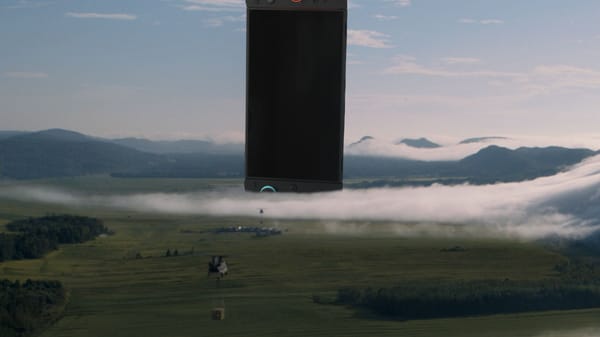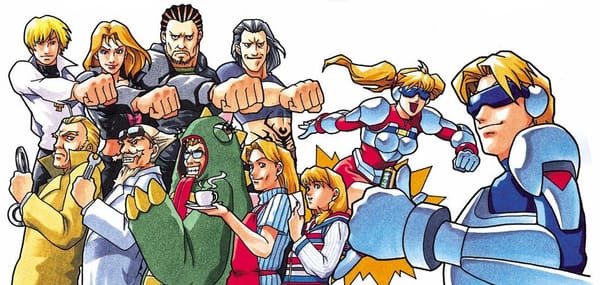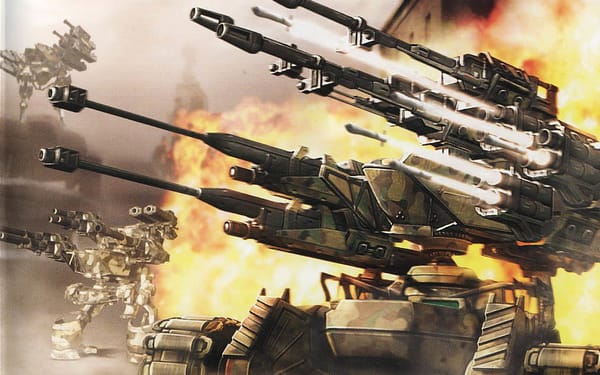Dogs baying, Mars FPGAing: This is the future retro gamers want
Loads of patch notes and fan translation updates this week, plus a new guest column about a groundbreaking '90s work of RPG Maker interactive fiction!
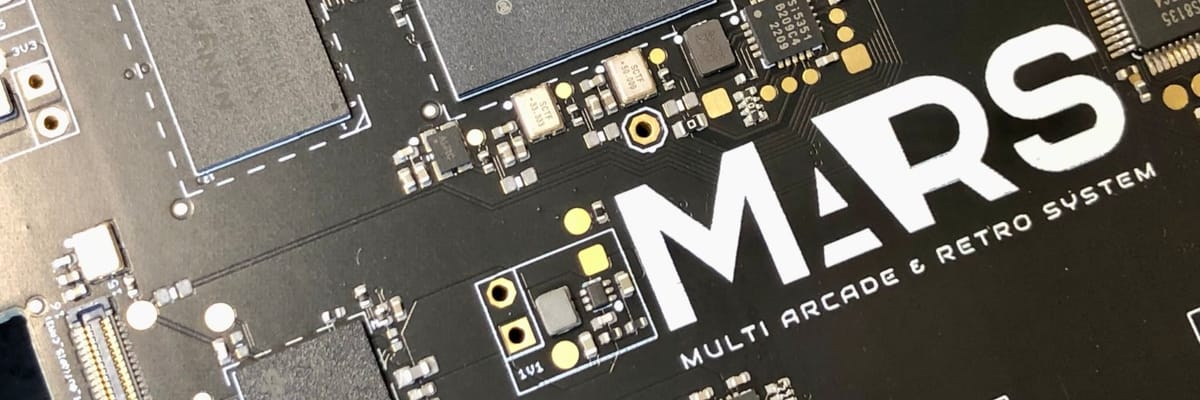
The day after my last Read Only Memo, I was on a plane to Los Angeles to check out Konami’s upcoming Metal Gear Solid Collection, a long-overdue re-release of its most beloved series. It proved to be a confusing event: Konami stated that the games run at the same resolutions they did when they were remastered for PS3/360 (720p), then backpedaled when previews went live, saying they actually run at 1080p.
That’s better, but as I wrote on PC Gamer, it still feels like something approaching the bare minimum when these games are already playable in emulators in their original and remastered versions.
The bonus features are welcome, but I feel like Konami — and the publishers behind many other retro game re-releases and collections — are leaving money and especially good will on the table by not paying attention to all the little details the hobby scene obsesses over: scanlines and CRT filters and framerate options, original textures or AI upscaled, PS1 warbliness fixed or left intact.
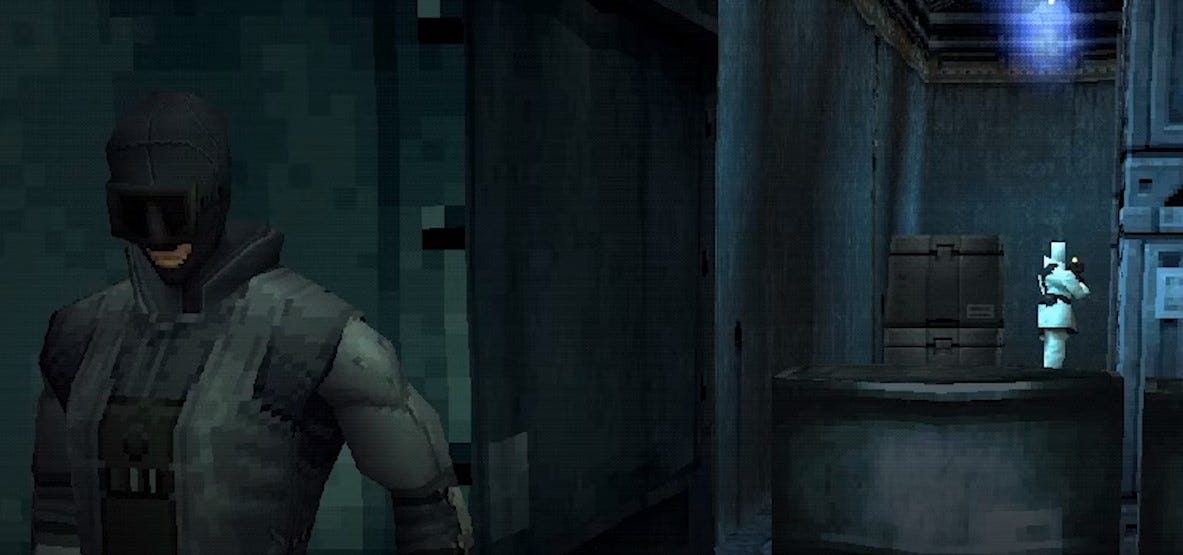
Just look at what open source emulators make possible for free and put those in your commercial product!! Yes it’s more work, yes it’s more expensive, yes it’s surfacing more options for players to understand — but the players who drive the conversation on remasters and retro game collections care about these things, and will celebrate their inclusion. Embracing every tool in the emulation toolbox is how you make a definitive collection, dammit!
Sorry Konami, I ain’t settlin’ for Metal Gear Solid 3 at 1080p, even if I am happy to see it officially on PC.
In other news: Denuvo has given everyone yet another reason to throw cabbage at it with the announcement of some proprietary emulation-blocking tech for the Nintendo Switch. VGC reported that this has been added to Nintendo’s dev portal. This tech isn’t actually brand new, though — I remember reporting on Switch emulation months ago and reading about it on Denuvo’s site.
To date it hasn’t been implemented in a Switch game, and maybe it never will — or maybe Nintendo itself will decide to pay up to include the protection in its games. Nintendo’s been aggressive enough towards emulation this year that I wouldn’t be shocked. That’d be a shame, I think, especially if it ended up bloating the executables of Switch games or affecting performance in any way — but I guess there’s always someone in the hacking community game for a new challenge.
Okay, I’m gonna puff up my lungs like that tree in Kirby and blow that storm cloud away — this issue of ROM is full of exciting stuff, including an early snippet of what could be the future of FPGA emulation, a fan translation interview and some meaty patch notes.
🎉 But first, one last bit of news: my 1,000 subscriber Fire Emblem giveaway has ended, and reader @pmcTRILOGY has won! Hopefully this won’t derail your Armored Core 6 speedrunning plans, Peter. 🎉
Now let’s, in the immortal words of Ambassador Charles Martinet, a-go.
Guest.cue: Baxter rides the surreal RPG Maker train Azusa 999
Baxter, a self-described lazy son of a gun who writes for fun, is the author of my favorite newsletter, Tsundoku Diving. In weekly posts he writes eloquently about a (typically obscure, totally new to me) Japanese movie or manga or game, so I asked him to bring that deep cut deftness to ROM. I first ran into Baxter’s writing in this (very NSFW, but incredibly detailed) history of Japan’s Strip Mahjong games. It’s an engrossing Sunday read — dive in after you finish this newsletter!
Azusa 999 | 1997 | Platform: PC-98 | Dev: Ichirō Sogabe | Adventure
It starts with a question. A young boy stands in an endless expanse of white, the outlines of train tracks in front of him. A textbox rests above his head containing a single word.
“Jump?”
This is how Azusa 999, an RPG Maker game released in 1997 for the PC-98, begins. Told with a striking monochrome aesthetic, it is a symbolist adventure where metaphors that at first seem overly simple or didactic stack endlessly on top of one another, gradually revealing an ocean of depth and feeling. Like an ocean, it can be hard to grasp, water falling through the fingers; like an ocean, it can be scary and cruel.
Following that boy as they wake up on a strange train populated by even stranger people, the game is an emotional exploration of death — our fear of it, our romantic ideation of it, how it subsumes us all — as the story unfurls into a tapestry of suicide, depicting heart-rending, elliptical vignettes of each passenger’s life as they find themselves in front of those train tracks, faced with that same question from the start of the game. There’s no fighting here, no puzzles to solve; for nearly the entire experience you are forced to do nothing but run up and down the length of the train again and again while the digital imitation of a crossing alarm blares incessantly, as if goading you to give up and close the game, to admit that there is no answer.
But you don’t. You choose to jump at the beginning because if you don’t, there is no game. You choose to continue, to repeatedly implicate yourself in these fictional tragedies because there has to be more. There has to be an answer that works.
There are a million reasons why emulation is so essential to the medium of gaming — the expression it allows, the new ways of play it creates, the inherent imperfections that can transform a work into something entirely new — but I can’t imagine anything is as important as this: giving people a chance and a choice to experience art they never have before, to meet the possibility of finding the most important answer to the most difficult question in a weird and beautiful and forgotten little game. I can’t imagine anything as important as Azusa 999.
ROM Trivia
- Professional slash fan translator Samuel Messner actually released an English translation of Azusa 999 back in 2020, so you can play it even if you don’t speak Japanese like Baxter!
- Azusa 999 won a contest for small, creative PC-98 RPG Maker games that Enterbrain held monthly back in late ‘90s
- Dante98, the very first iteration of RPG Maker, released in 1992 (the 98 being for PC-98, obvs!). Its manual on the Internet Archive is a visual treat.
The Big Two
1. MARSFPGA?

It’s still too early to declare MARSFPGA the future of hardware emulation & retro gaming as we know it, but it’s not too soon to declare that that’s possible. The Twitter account for MARS popped up this week, teasing “a revolution is coming” before dropping a few early details:
- MARS stands for Multi Arcade & Retro system, implying it will be able to run some arcade systems that are beyond the MiSTer hardware’s capabilities
- It’s running on a 400MHz Ti180 M484 FPGA with some significant advantages of the current go-to DE10Nano FPGA board, at least in terms of on-paper specs
- It’ll support 4K 4:4:4 output, which refers to the image’s chroma subsampling (this RTings page is a good overview, but tldr the cleaner image is most noticeable on text)
- It’ll be distributed from the US, but available worldwide
- The system is capable of outputting 1440p at 120Hz, and supports VRR and HDR. Black frame insertion (which reduces motion blur)
- It’s gonna be $700, with a planned launch of Q4 this year
So why does any of this matter? If you don’t follow FPGA stuff, really all you need to know is that FPGAs are bits of hardware that can be programmed to mimic the functionality of another piece of hardware (like, say a Super Nintendo) and the current go-to open source project, the MiSTer, is built on FPGA hardware that more or less maxes out its ability to replicate systems at the complexity/power level of the PlayStation 1. So a more powerful FPGA base could theoretically open the door to PS2-era hardware emulation, more arcade platforms, etc.
The announcement and trickle of details has ruffled some feathers with MiSTer users, and I’m not enough of an expert on the hardware to know at this point what’s accurate and what’s exaggerated. Is this going to be the hardware FPGA developers want to work with a year from now? Is it a total load of hot air? How effortlessly will existing MiSTer cores work on it? I don’t know, but I do know people are going to be talking about each of those things a whole lot for the next few months.
I’m excited to see how this project fits into the FPGA ecosystem, which is currently dominated by the MiSTer and Analogue. I’ve reached out to the MARS team with a bunch of questions, so hopefully you’ll be reading an interview digging into all of the above in a future ROM.
Mind spreading the word about Read Only Memo? Send somebody a purple link.
2. Dog of Bay, now in English, is more than just a weird furry rhythm game

Here’s something to howl about: Hacker/translators Hilltop Works and Cargodin teamed up for the surprise English release of Dog of Bay, an early PS2 rhythm game from the year 2000 never released outside Japan. On the face of it it’s an utterly bizarre game, like Cabaret but starring anthropomorphic animals. But the duo behind this translation believe it deserves reevaluation.
“This game has been the butt of jokes for a long time,” Hilltop says. “It came up on X-Play, and they did a whole thing where they made fun of it. They couldn’t parse what was going on. It’s been the butt of react streamers as well: look at this weird thing from Japan. But I want people to give this a fair shake.”
Cargodin points out that the game’s producer (and contributing lyricist) Oji Hiroi, who’s best known for the Sakura Wars series, has a history with these themes, and argues Dog of Bay probably wasn’t just being weird for the sake of it. “I think that his aunt was in a revue, so it’s been joked that he grew up in the dressing rooms of dance revues, that kind of environment,” she says. “If he had any deep influence on the game, it probably was a love letter for the genre of stage musicals and cabaret.”
Hilltop points out that in Japan, Dog of Bay actually had some pretty mainstream appeal and cred, too: the voice behind Dragon Ball Z’s Frieza and the singer of the anime’s famous theme songs are both starring vocalists in Dog of Bay.
Tackling the translation was a quick side project for Hilltop, who’s still hard at work on Boku no Natsuyasumi 2 — all his hacking work on that game is finished, though, and he “got the itch” to hack another game while the translation for Boku continues. For Dog of Bay, Cargodin actually started the translation a couple years ago “in a one-night binge on New Year’s Eve.” She helped a little with Boku, and recently brought up Dog of Bay as something they could work on at the same time. “We went from basically 8% done to basically 98% done in about a week,” she said.
A love for rhythm games was the real catalyst — Hilltop called out Gitaroo Man in particular as the kind of game from this era that blended music and story in a way we don’t really see anymore.
“And Dog of Bay has a lot of cool stuff going on stylistically,” he says. “Every aspect of it is something you don’t see much nowadays: the theater theme, a rhythm story game. Even just the little things, like it’s a CD-based PS2 game and not a DVD-based PS2 game. It feels even more like an album with a tiny little game attached to it.”
Just be warned if you do give it a shot: the anthropomorphic characters probably won’t be the only thing that throws you for a loop at first.
“Even if you’ve played rhythm games, it’s impossible to figure out what you’re supposed to do when you start this game, if you haven’t read anything about how to play it,” Hilltop says. “And even when you do all the instructions sound crazy. There’s a note highway, and note directions, and gems, and lens flares on the gems, and there’s no great indicator of when you’re supposed to press the damn button. You have to go with the flow a little bit. Even people who play rhythm games get lost at first.”
You can grab the English patch here.
Patching In

Unreal Pikmins - Yuzu’s latest Progress Report is out, and includes details on some fixes for Pikmin 4 as well as other Unreal Engine 4 games. Most significantly, some crashes on Nvidia GPUs have been fixed.
Yuzu developer toastUnlimited is working towards a system that will allow users to share game-specific emulator settings and apply them automatically. Sounds like a fantastic feature for fiddly games like, say, Tears of the Kingdom…
Yuzu Mainline 1532 adds a screenshot resolution option, as well as the ability to take screenshots in different aspect ratios
Yuzu Early Access Build 3830 added support for some Super Smash Bros. modding!
Ryujinx released an update the day after Red Dead Redemption released on Switch to “implement support for masked stencil clears on Vulkan” which fixed a smearing issue, thus making Red Dead playable at 4K 60 fps (or at a variable framerate). Here’s a video of it in action. Who needs a PC port, right? Not salty at all.
Sega Model 3 emulator SuperModel got some minor updates, aka my favorite kind of hyper attention to detail:
“Set soundboard CPU to correct clock speed
The 68K on the soundboard is rated at 12 MHz but runs at 11.2896 MHz, which is 256 cycles/sample with a 44100 Hz sample rate.”
If you didn’t know about SuperModel: check it out! The latest builds are here. Get your Daytona 2 or Star Wars Trilogy Arcade or Virtual On 2, er, on. Here’s a tutorial from Video Game Esoterica.
Core Report

Mo Turtles, fewer problems? While programmer Furrtek releaed a beta TMNT Arcade FPGA core some months back, Jotego has now released one as well, playable on the MiSTer as well as the Analogue Pocket. Pizza time!
MAME adds MPU2 support - Though not yet playable, MAME now includes support for some slot machines I have certainly never heard of, but isn’t that kinda MAME’s thing? Documenting the obscure, one bit of hardware at a time.
Also: darts!
Translation Station

Yakuza Kurohyou translation released - Dang there are a lot of Yakuza games, some still not available in English! Here’s one, though: full title Black Leopard: Like a Dragon New Chapter, released for the PSP in 2010. There’s also a sequel which the same translation group, TeamK4L, has already translated. Find the patch at the download link!
J.B. Harold: Blue Chicago Blues’s translation for the Sega Saturn is nearing completion. Its most recent update in July made the first three chapters of the game playable in English; its next update seems likely to finish the whole thing off. This is the last of a series of murder mysteries from Riverhillsoft, which also made a little series called Ogre Battle. Blue Chicago Blues couldn’t be much more different: it’s actually an FMV game, a movie that stops every once in awhile for you to make a decision.
Unlike the in-development Macross: Do You Remember Love PS1 game fan dub, only the UI text has to be translated here. That’s thanks to Blue Chicago Blues has a particularly strange history: as explained by project lead Arjak, the video scenes were actually shot in the US, then dubbed into Japanese. Most versions of the game were only released in Japan, including the Saturn’s, but a rare Windows version exists, providing a source for video files with English audio.
Neato — though honestly I’d probably get a kick out of fan translated subtitles for English dialogue that’d been dubbed over with Japanese…
Android Attorney Investigations 2 - Miles Edgeworth’s much-loved second solo game, which still hasn’t gotten an official English release, has had a fan translation for years at this point. A kind soul has now inserted that translation into the Android version of the game, which you can buy with just a bit of region-hopping VPN trickery. Here’s an installation guide.
Good pixels

A friend of the newsletter has shared some nice crunch Armored Core screenshots for this week’s Good Pixels. God I love that pink UI.
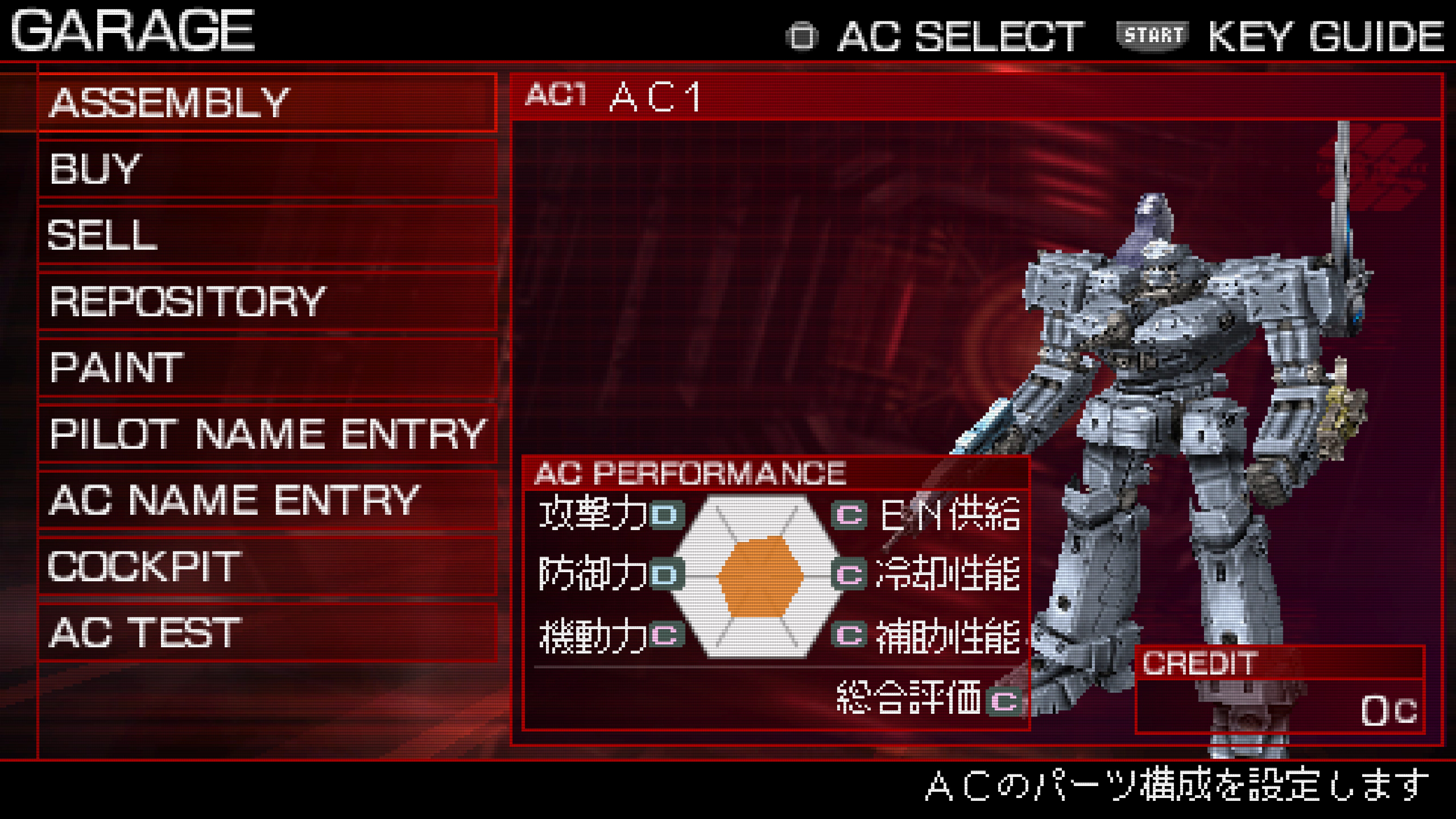
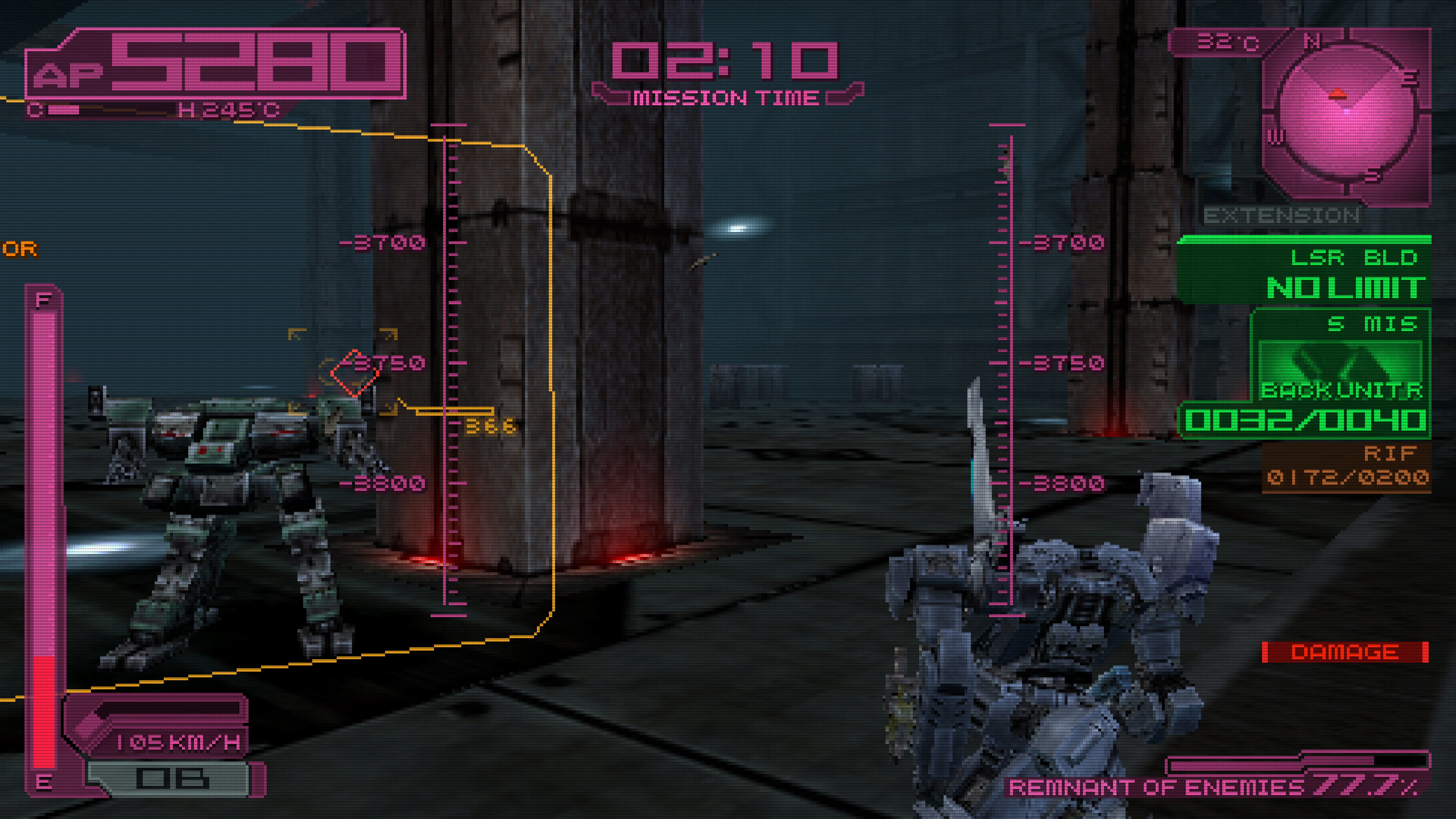
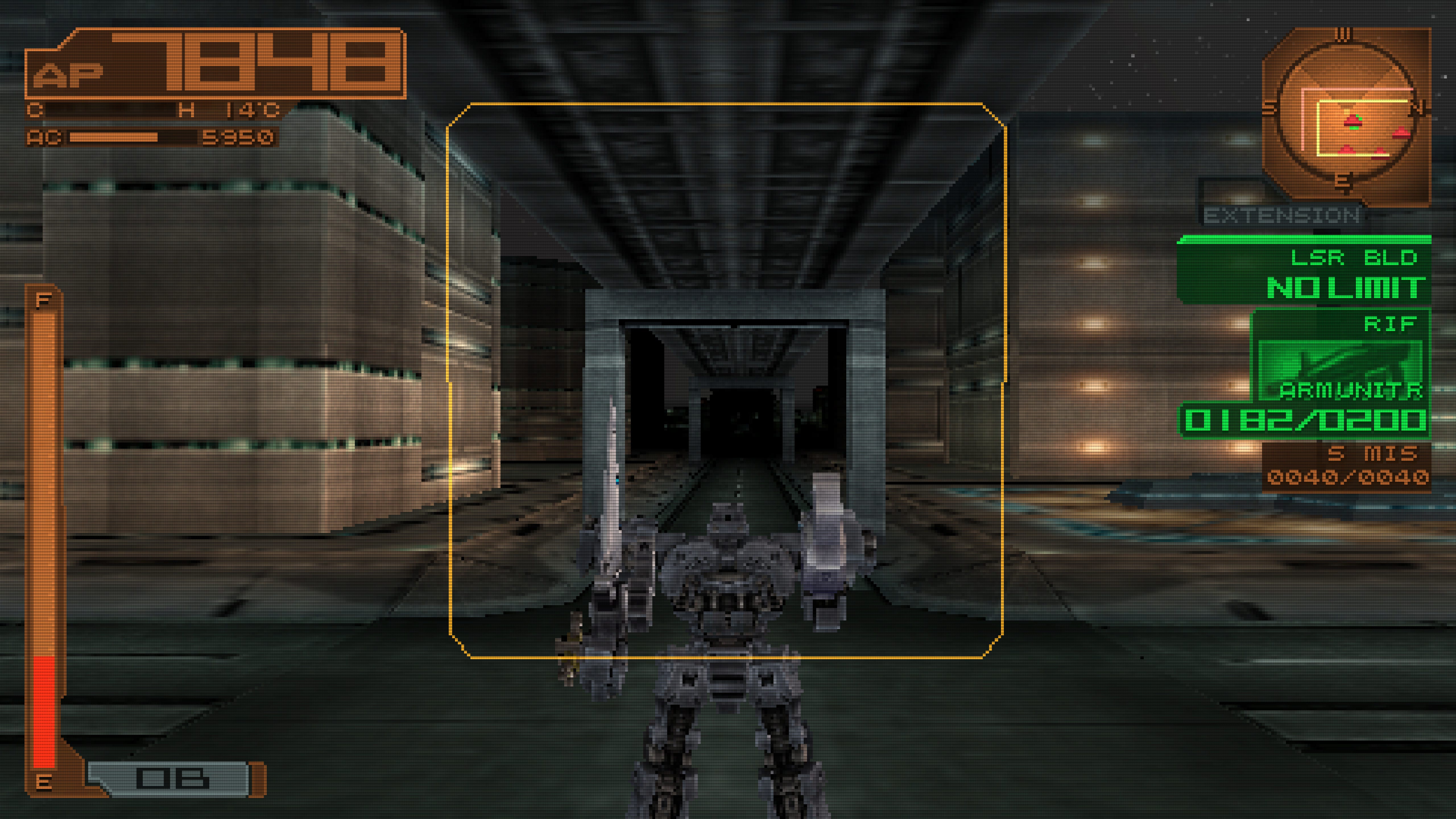
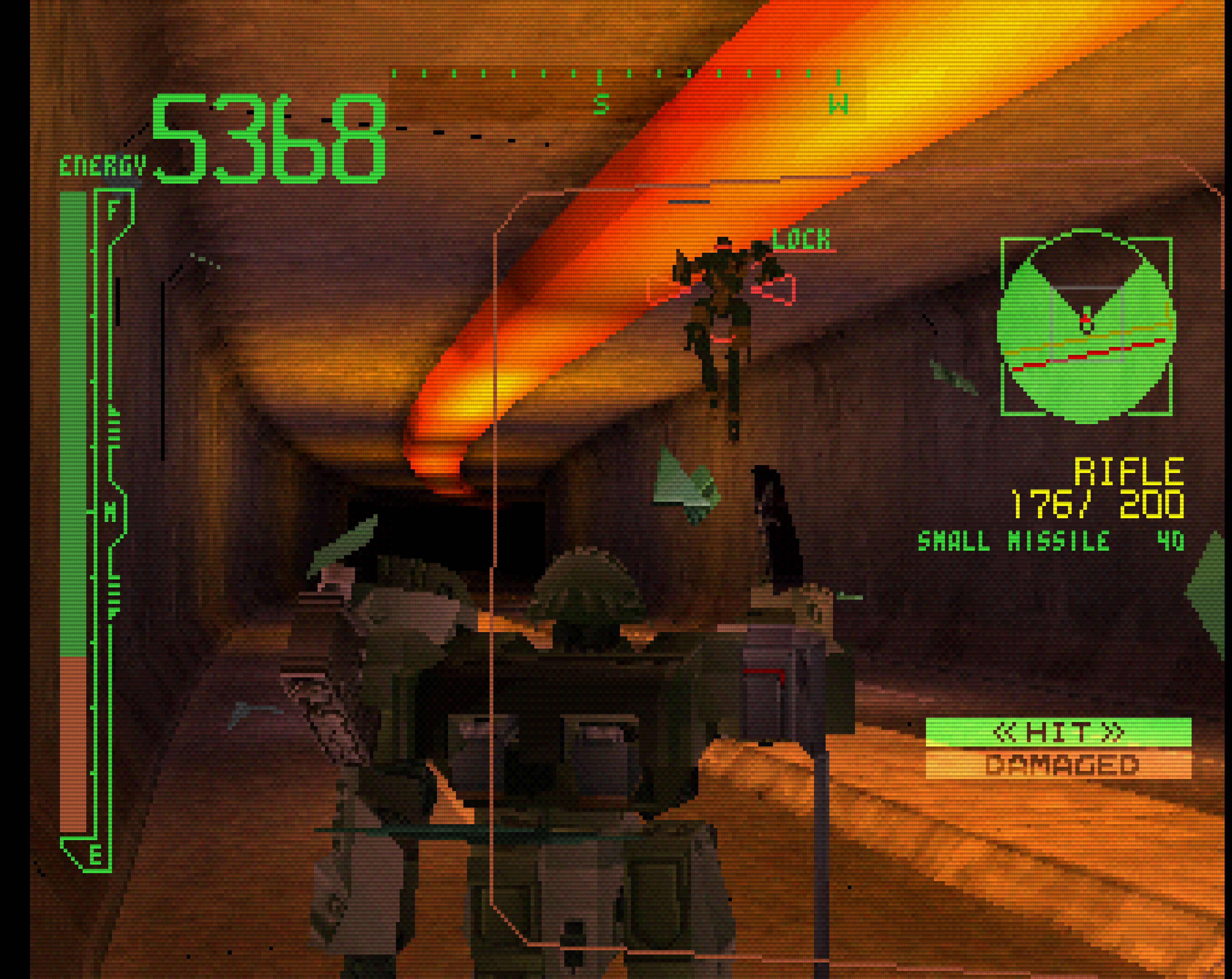
Logging off. 🤖
